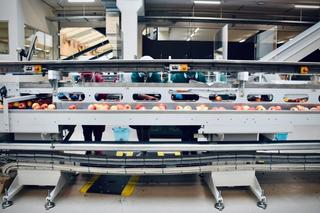Blog
In search of supply chain visibility: Transparency via the cloud

[Original post on Industry Week]
Responding to market volatility or uncertainty is a top pain point for most manufacturing supply chain executives, and the source of the problem is that most can’t answer the simple question, “Where is my stuff?”
In other, more eloquent words, these executives lack supply chain visibility into inventory levels, anticipated shipment of parts, manufacturing stoppages and logistics issues because this information exists in silos among departments such as sales, production and logistics. Coupled with external variables such as port closures, incidents at supplier plans, natural disasters, etc., these pressures have a cascading effect on a manufacturer’s ability to fill orders on time, improve lead times and performance, reduce capital expenditures and manage risk.
To make matters worse, executives need more than just visibility into internal data and external events. They need recommendations on next-best actions to resolve an issue or mitigate a risk. This type of actionable intelligence is achieved by providing all stakeholders with a network platform that allows for connectivity, scenario modelling, predictive analytics, and exception-based dashboards that shows what happened, and offers recommended mitigation for the event and a next-best action. To get there, executives must lead changes in processes, technology and culture.
The process shift
Business processes need to become more integrated across business functions and across their supply chain network. Seamless workflow of information and, more important, up and down stream supply chain decisions is a foundational step toward transparency. Greater access and collaboration on planning and performance information and decision based outcomes is key, especially in anticipating demand or supply disruptions of which advances in technology has made it easier.
The technological shift
Fortunately, the technological capabilities are in place to create this kind of supply chain visibility. It comes from a variety of advances:
- Cloud. A single, multi-tenant technology cloud-based platform allows manufacturers and their partners to quickly establish collaborative networks on a many to many model. Cloud technology helps overcome the venerable obstacle of aggregating data. Through APIs available from cloud vendors, it’s now easier than ever to upload and download data from systems of thousands of partners and providers, and to standardize the data from those partners, whether from mobile devices or data lakes.
- Mobile technology. Whether it’s smartphones in the hands of truckers updating their GPS coordinates, or RFID wands attached to tablets in warehouses for updating inventory levels, today it’s easier than ever to get updated information on the where, when and how much regarding crucial inventory in the supply chain.
- Predictive analytics. From the ability to combine both unstructured and structured data (aka big data), to the aggregation of data in a repository (aka data lake), analytical needs run across the supply chain. A data lake allows companies to index information in Google-like fashion, so the appropriate data rises quickly to the top. Many manufacturers are implementing cognitive applications that use big data analytics to predict events with a high confidence level or identify causality between data sources.
Combining these technologies, manufacturers can now get actionable insight on supply chain data from multiple tiers.
The cultural shift
Technology, however, is only part of the solution. A cultural shift is also required — both within manufacturers’ walls and across their supply networks. We’ve found that people-related change management can create even bigger obstacles than technology investments.
Let’s start with internal issues. When manufacturers discuss visibility, they are typically referring to cross-domain access. Visibility exposes raw data about all operations, and we’ve found that few executives will cede control of their data easily. For visibility to work, that attitude must be overcome.
On the external side, manufacturers must change the way they interact with suppliers. Too often, manufacturers negotiate agreements based only on price. Going forward, they must do so with an eye to value. They must conduct negotiations in such a way that encourages more collaborative behavior. Collaboration is needed to foster trust among the trading partner network and is the catalyst to providing a real end-to-end information business process view.
Supply chain visibility - getting started
Advances in mobile applications, data analytics, processing power and cloud solutions are facilitating this journey to visibility within the supply chain. But faced with change management and cultural issues, most manufacturing executives don’t know where to start. Though there is no one-size-fits-all approach, we recommend a four-step process to get started with pilot programs:
- Facilitate a cultural shift. Eliminating data silos requires a heavy dose of collaboration. Inspired by leadership, collaboration will breed greater understanding among departments — as well as with suppliers — around the issues plaguing particular segments of the supply chain.
- Identify risk areas. The more manufacturers understand potential problems, the more proactive they can be. The more data fed into databases and other systems about potential issues, the better they can move from being reactive to proactive.
- Embrace big data and analytics. Bring enterprise legacy data and unstructured data together with advancements in technology to create aggregated visibility and more meaningful insights to fuel decisions.
- Connect your supply chain community in the cloud. Providing a single view of supply chain activity across all trading partners from sourcing to delivery will empower supply chain executives to quickly adapt their inventory, production and logistics plans, thereby eliminating delays before they become problems.
It’s no accident that half of these steps are technological and half are cultural. People still run supply chains, not technologies. It takes a concerted effort on all fronts to create the supply chain visibility necessary to attain agility and responsiveness so they are no longer just buzzwords.







